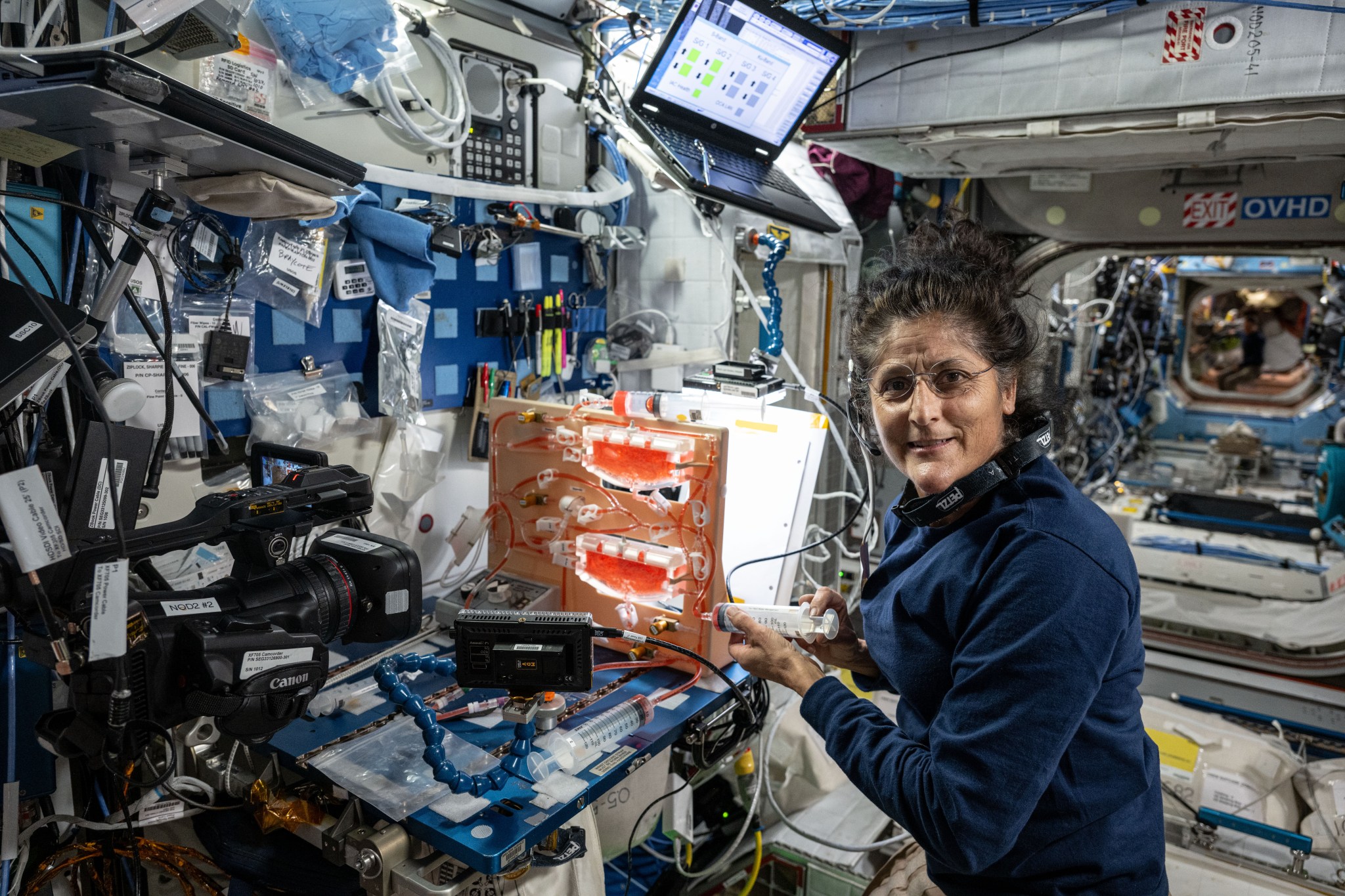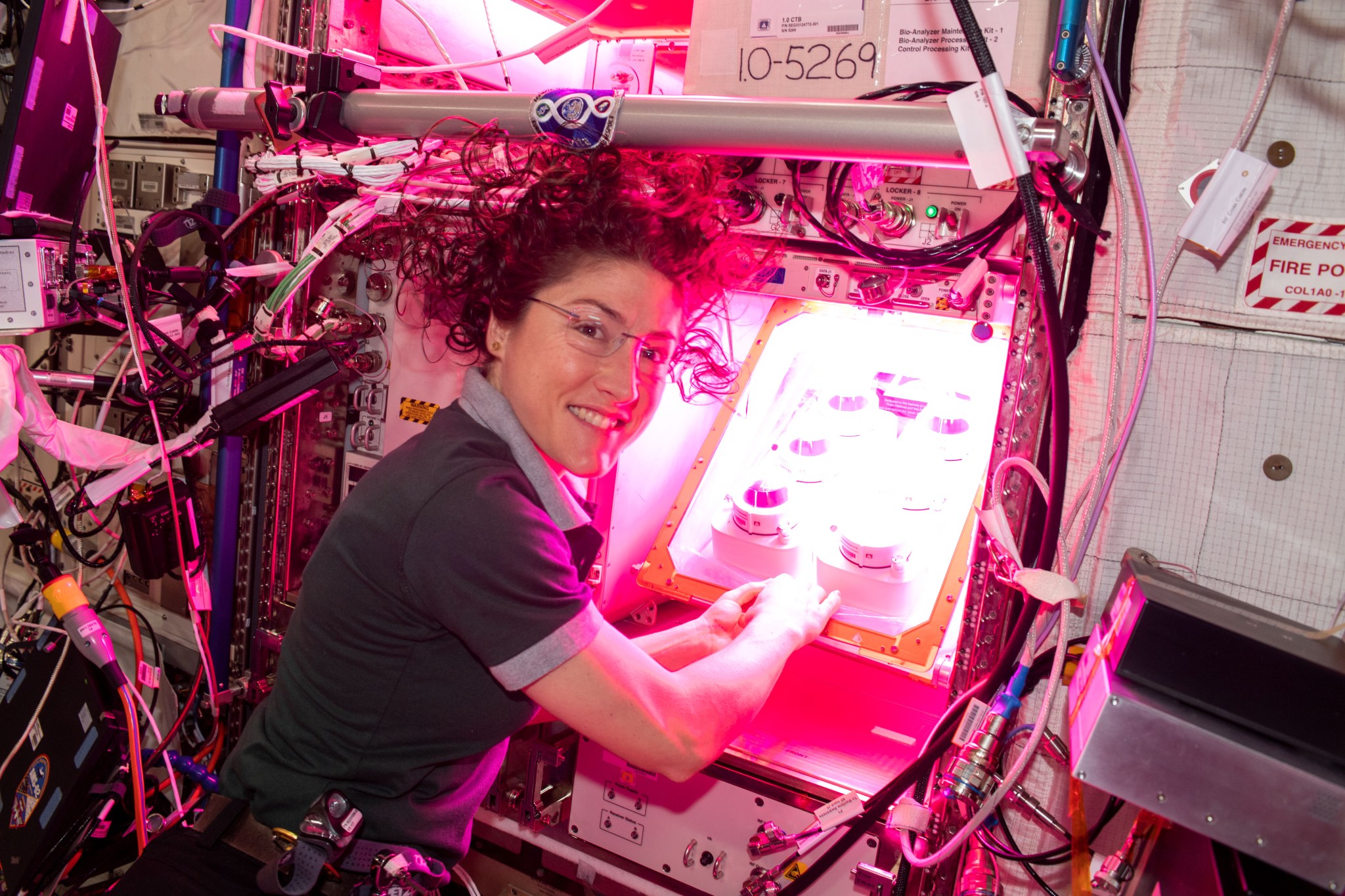Substrate Testing System for Fluid Management
Nancy Hall (MSI0)
Project Background / Description
As humans begin to explore space, ensuring that astronauts are well-nourished and satisfied, through their meals will ensure that they have the capability to conduct research and push the bounds of the human presence in our universe. NASA identified the development of space crop production systems as a potential solution to provide astronauts with a proper food supply. While many have developed and deployed, one fundamental issue persists: water delivery.
Fluid management has been a challenge for all space crop production systems, which prevents astronauts from relying on them for food supply. This issue stems from the lack of understanding of the fluid physics in porous media under low-gravity conditions. Due to the limited resources in space travel, the ideal water delivery system would be completely passive (i.e., requiring no mechanical or electrical inputs) and have reduced input needs (i.e., growth media). To study the fluid physics seen in a space environment, researchers on Earth can exploit scaled capillary models to utilize surface tension forces to drive fluid flow rather than gravitational forces.
Challenge Objectives
Student teams will be tasked with designing a substrate testing system, where researchers can explore the fluid physics of different potential growth media materials to improve the design of plant growth systems for space.
The system should:
- Include the option/method to change outgrowth media materials,
- Have a method for moving fluid in and out of the growth media, and
- Include any required sensors, electronics needed, etc. to study the overall system and be self-contained.
Mission Performance/Requirements
- This testing system should be designed such that it will fit a 2U Nanolab container and must be capable of tracking fluid flow using both visual methods and with sensors.
- This system must be flexible such that it will allow researchers to test materials on Earth in a controlled lab, or through drop tower and parabolic flight testing.
- Identify the type of materials and/or substrate you plan to use and how it will support testing for food supply or water delivery.
- Identify sensors needed to track the behavior and viability of the substrate and movement of the fluid.
Key Considerations
This first year of the project is the design stage where teams will design the substrate system, visualization system, sensors, etc.
The second year will be a capstone where the top-ranking team(s) will be selected for a capstone to build the system for testing in either NASA’s 2.2 Second Drop Tower or the Zero-G Facility (5.18 second drop tower).
System Design
- The system should fit in a 2U nanolab box – 10 x 10 x 20 cm
- Power is available but is limited via USB 2.0/USB 3.0, 5V
- The design should be able to handle at least 2 different type of sensors, such as dissolved gas, humidity, etc. and the team should explain why they pick the sensors.
- Design should include dimensions and location of all hardware inside the 2U nanolab box.
- Substrate materials should be considered to be “food-safe.”
- The system should demonstrate how it will support testing for water delivery or have a method for circulating fluid flow.
Literature Resources
- Wasserman, Marc, Mark Weislogel, Rihana Mungin, Tyler Hatch, and John McQuillen. “The Plant Water Management Experiments on ISS: Soil.” 51st International Conference on Environmental Systems, 2022 (See https://ttu-ir.tdl.org/items/a2a3ef49-c8e4-466a-a838-b3313708b468)
Click here to register for the Space I: Substrate Testing System for Fluid Management Challenge
Application/Registration Information
Contact Information
Catherine Graves, Ph.D.
STEM Integration Manager
Email: grc-university-design-challenge@mail.nasa.gov
Glenn Research Center – Office of STEM Engagement
Phone: (216) 433-6656
Email: grc-university-design-challenge@mail.nasa.gov
Latest Content
Stay up-to-date with the latest content from NASA as we explore the universe and discover more about our home planet.

On Jan. 19, 1965, Gemini 2 successfully completed the second of two uncrewed test flights of the spacecraft and its…

Set to launch within a few months, NISAR will use a technique called synthetic aperture radar to produce incredibly detailed…

Insights into metal alloy solidification Researchers report details of phase and structure in the solidification of metal alloys on the…





























